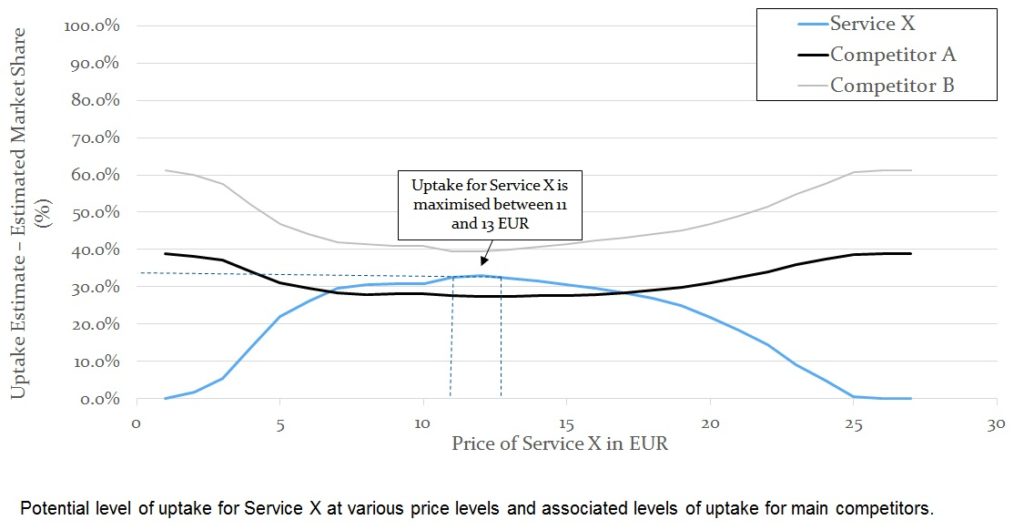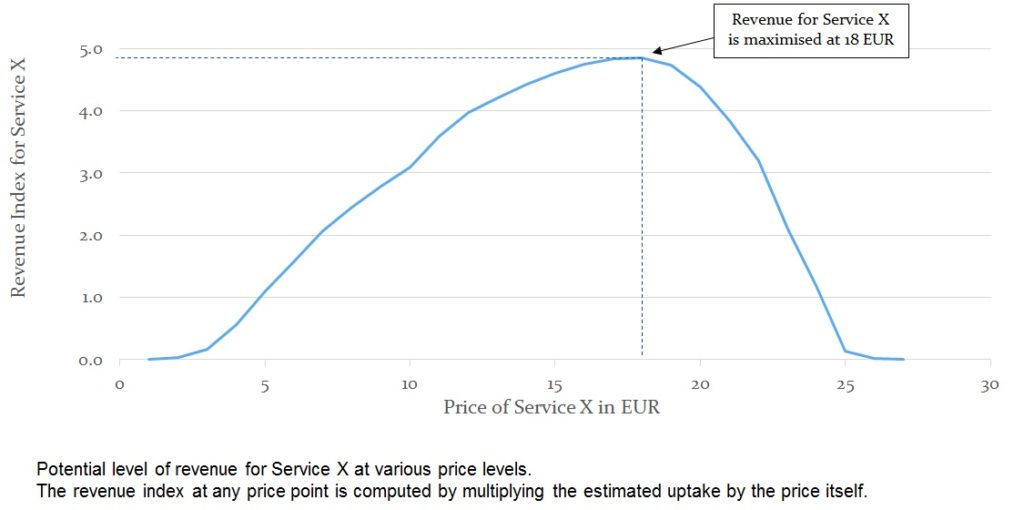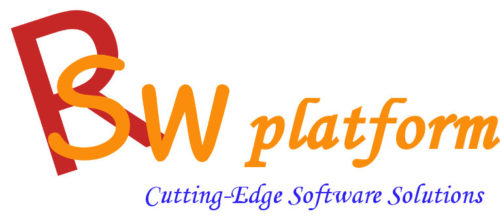The Van Westendorp approach itself does not attempt to solve the demand estimation problem, as it is a pure pricing approach.
However, it is possible to extend the VW potential by including some volume/uptake information in the analysis. This additional information is collected through specific volume questions that could be asked for the product for which the four VW questions are asked (e.g., Product X) as well as for any other product currently offered on the market (e.g., Product A, Product B, Product C, etc).
Example of volume questions:
a) If Product X was launched at the [cheap price / expensive price], how many purchases would you make per month? Product X _ _ _ Product A _ _ _ Product B _ _ _ etc. b) If Product X was launched at the [cheap price / expensive price], how likely would you be to buy it in the next month? (scale 1:7 with 1 = "I will not buy it" and 7 = "I will definitely buy it")
The volume uptake for Product X and for any other key product in the market (Product A, Product B, Product C, etc.) should be asked assuming that Product X is offered at the cheap and at the expensive price points, as these are the two key threshold points for the analysis.
These two key price points vary across respondents, thus the questionnaire structure should be flexible enough to accommodate this.
The function advanced.VW.volume available in R-sw Pricing provides the volume analysis for the product for which the standard VW questions are asked. In case the too cheap price point has not been included in the questionnaire, one can run the alternative function advanced.VW.volume.missingTooCheap.
The function advanced.VW.volume.AllProducts provides the estimated uptake for all products for which the volume information is available.

Once volume has been estimated for the various price points, it is possible to run a revenue analysis by multiplying volume by price.

The function volume.to.revenue available in R-sw Pricing provides a revenue analysis.
